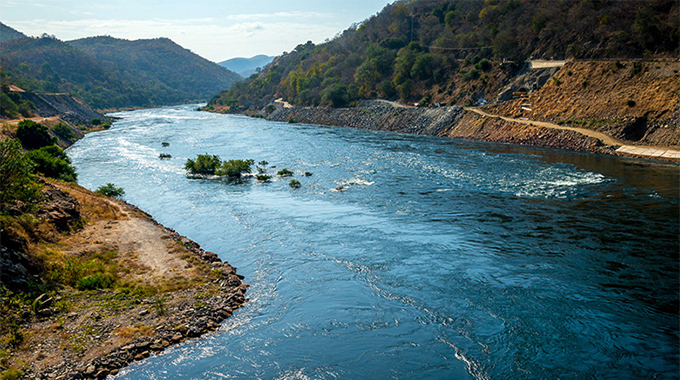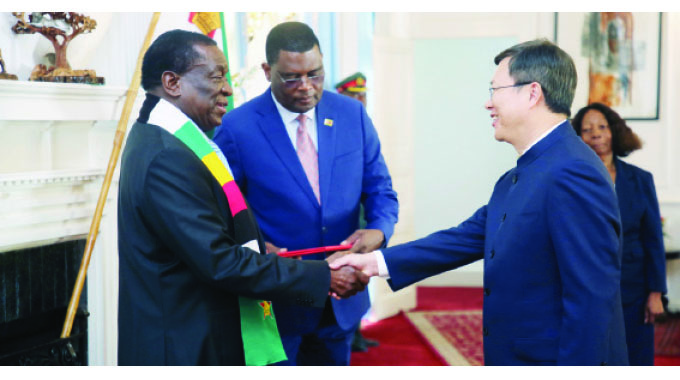Harnessing the Zambezi River… A catalyst for regional integration in Southern Africa

Stanford Chiwanga, [email protected]
REGIONAL integration has long been hailed as a driving force behind economic growth, political stability, and social development. In the context of Southern Africa, the Zambezi River emerges as a significant natural resource that holds immense potential to foster regional integration.
Spanning six countries, namely Angola, Zambia, Namibia, Botswana, Zimbabwe, and Mozambique, and with an abundant supply of water and energy, the Zambezi River presents a unique opportunity for collaboration and cooperation. By capitalising on this shared resource, the countries in the region can overcome historical divisions and work towards a prosperous and interconnected future.
The Zambezi River serves as a lifeline, providing water to millions of people in the region. Effective water management is crucial to ensure the availability and equitable distribution of this precious resource.

Zambezi River
By establishing a comprehensive framework for water governance, the riparian nations can promote sustainable development and address common challenges such as water scarcity, droughts, and floods.
Cooperation in water management will enhance regional resilience, ensuring the availability of clean water for agriculture, industry, and human consumption.
The Zambezi River also boasts immense hydropower potential, particularly evident in the iconic Victoria Falls and the Kariba Dam. Collaborative efforts to harness this clean and renewable energy source can revolutionise the region’s power sector.
Expanding the capacity of existing hydroelectric installations and constructing new ones will provide a stable and affordable electricity supply to both urban and rural areas. Reliable access to electricity stimulates economic growth, enables technological advancements, and enhances the quality of life for communities across Southern Africa.
Infrastructure development requires a boost, what better way to use the Zambezi River as a catalyst to enhance connectivity within the region? By investing in modern transportation networks, such as roads, bridges, and ports, the countries along the Zambezi can facilitate the movement of goods, people, and services.
Improved infrastructure will boost trade, tourism, and investment, fostering economic integration and prosperity. Additionally, enhanced connectivity will strengthen cultural exchanges, encourage tourism, and promote mutual understanding among the diverse communities in the region.
The Zambezi River basin is a biodiversity hotspot, supporting a wide array of plant and animal species. Collaborative conservation efforts can ensure the preservation of this invaluable ecosystem. By establishing trans-boundary protected areas, promoting sustainable tourism practices, and implementing comprehensive conservation strategies, the riparian countries can safeguard the Zambezi’s ecological integrity.
Preserving the natural heritage of the river basin will not only protect endangered species but also attract nature-loving tourists, boosting the region’s economy and promoting sustainable development.
The basin also provides fertile land for agriculture, offering significant opportunities for increased food production and improved food security in the region. By implementing coordinated irrigation systems and sharing agricultural best practices, countries can maximise agricultural productivity and reduce dependence on food imports.

Zambezi River Authority
This not only strengthens food security but also creates economic opportunities for farmers, stimulates rural development, and reduces poverty.
By jointly managing the Zambezi River, Southern African nations have a unique opportunity to foster political cooperation and peace building. Water-related conflicts have historically strained relationships between neighbouring countries.
However, by engaging in shared governance mechanisms, transparency, and equitable distribution of benefits, the countries can build trust and establish a foundation for peaceful coexistence. The pursuit of joint projects centred on the Zambezi River can serve as a unifying force, fostering mutual understanding and diplomatic ties among nations.
Lest some of us have been living under a rock, it is important to remind everyone that the Zambezi River is home to iconic landmarks such as Victoria Falls, which attracts tourists from around the world.
Collaborative efforts to promote tourism along the river can create a thriving regional tourism industry. By jointly marketing and developing tourism infrastructure, countries can leverage their collective natural and cultural attractions.
This will not only boost the economies of local communities but also promote cultural exchange, fostering a sense of shared identity and unity among the people of Southern Africa.
The mighty river also provides a unique platform for collaborative research and knowledge sharing. By pooling resources and expertise, countries can undertake joint scientific studies on water management, biodiversity conservation, and climate change adaptation.
Shared research initiatives will facilitate the exchange of ideas, innovations, and technological advancements, leading to more effective policies and practices. This collective approach strengthens the region’s capacity to address shared challenges and positions Southern Africa as a hub of scientific excellence.
While the Zambezi River is viewed as the lifeblood of Angola, Zambia, Namibia, Botswana, Zimbabwe, and Mozambique, it is still prone to natural disasters such as floods and droughts. By establishing regional mechanisms for disaster preparedness, early warning systems, and coordinated response strategies, countries can mitigate the impact of these events.
Sharing resources, expertise, and information during times of crisis fosters solidarity and cooperation, ensuring a timely and effective response to natural disasters. This collaborative approach builds resilience and strengthens the region’s ability to withstand and recover from environmental shocks.
Harnessing the Zambezi River’s potential requires a skilled workforce equipped with the necessary expertise in water management, energy generation, tourism, and other related fields. Collaborative efforts can be made to develop joint educational and training programmes, exchange scholarships, and share technical knowledge.
This investment in human capital development will create a pool of skilled professionals who can contribute to the sustainable development and management of the Zambezi River basin, further enhancing regional integration.
By recognising the immense opportunities that the Zambezi River presents and embracing a collaborative and inclusive approach, Southern African countries can harness the power of this shared resource to achieve regional integration.
Through water management, energy generation, infrastructure development, environmental conservation, political cooperation, agriculture, tourism, research, disaster management, and skills development, the region can unlock its full potential and pave the way for a prosperous, connected, and sustainable future for all its inhabitants.
The Zambezi River can act as a unifying force, transcending historical divisions and fostering a shared vision of progress and prosperity. Embracing this collective approach will lead to sustainable development, enhanced social cohesion, and a brighter future for the people of Southern Africa. @plainstan











Comments